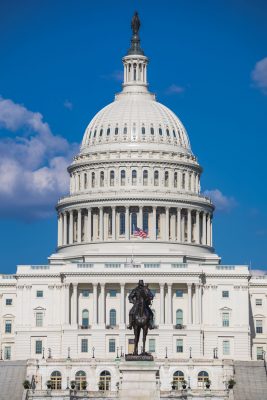2020 felt like both the longest and the shortest of years. In many respects, it seemed to be never-ending—particularly when it came to the endless election cycle and continuous online meetings. At the same time, given the chaotic nature of adapting to pandemic life and the pressure to complete legislation to address the pandemic response, the year seemed to fly by. Now that 2020 is behind us and Joe Biden will be the 46th President of the United States, it is time for a fresh start in what hopefully will be a more productive and less traumatic year.
With the start of 2021, the 117th Congress officially begins. The 20th Amendment to the Constitution directs that a new Congress convene at noon on Jan. 3, in each odd-numbered year (always following an election year), unless the preceding Congress has, by law, designated a different day. The first order of business is to swear into office the new Senators and all of the House of Representatives. Most new members went through orientation during the final weeks of the last Congress. While they generally have a majority of their staff on board, they are still settling into their offices and awaiting final committee/subcommittee assignments.
Also, on the first day of a new Congress, the House focuses on getting organized, adopts its procedural rules, and elects the speaker. The Senate, unlike the House, is considered a “continuous body” and does not need to re-organize itself at the start of each new Congress. The Constitution provides for overlapping Senate terms, which means that only one-third of the 100 Senators face the end of a term every two years. This allows for two-thirds of the Senators to continue serving without interruption. It also means that the Senate always has a constitutionally required majority for a quorum. However, when there is a significant change in party control or a number of new Senators, the upper chamber will consider proposals to modify its standing rules.
With the start of a new Congress, the Flexible Packaging Association also embarks on a new advocacy agenda. Many of FPA’s priority issues remain the same—including plastics, tariffs, recycling, food safety, and sustainability. But plans and strategies must be revised to reflect changes in key committee leadership and new members in FPA’s footprint. Additionally, because all the legislation of the 116th Congress expired when it adjourned, many of the pieces of legislation that FPA supports, such as the RECOVER and RECYCLE Acts, must be re-introduced.
We anticipate that advocacy activities in January and February will be focused mainly on outreach efforts to new members and staff, as we educate them on the benefits and effectiveness of flexible packaging. We would welcome the participation of FPA’s member companies in these efforts. While the effects of COVID-19 mean that work on Capitol Hill is not back to normal, we still look forward to engaging over virtual platforms and hope to resume in-person meetings as soon as possible. Last year, if we learned anything, we learned that being “flexible” was key to the success of our advocacy efforts, both literally and figuratively.
